It is said that Lieutenant Colonel George Armstrong Custer is the most photographed/researched/written about man in history. Likewise, his Last Stand at the Battle of the Little Bighorn has drawn interest from hundreds, nay thousands, of individuals. This is part of the reason our director, Christopher Kortlander, decided to open a museum on the battlefield.
Those who choose to visit the Custer Battlefield museum will undoubtedly leave knowing more than they did when they entered. Working in the museum every day, I have had a unique opportunity to learn a lot about the battle, but my knowledge of the museum's exhibits has come to include some things that often go unnoticed.
1.) Of the ninety-some photographs lining the museum's walls, it is easy to miss seeing a few. One that I hope you don't miss seeing is Hairy Chin, of the Hunkpapa tribe, dressed as Uncle Sam. It never fails to bring a smile to my face.
2.) According to one of our exhibits, the name Hunkpapa means "those who camp at the entrance." Now I find this to be interesting, because in June of 1876, the Hunkpapa tribe was situated on the edge of the Indian Encampment in the valley of the Little Bighorn - the edge where Major Reno's column attacked, beginning the battle. Could it be that their name was prophetic? Or that they really did always situate themselves at the entrance to the camp?
3.) One of the Indian casualties of the battle was a Cheyenne named Roman Nose. What an interesting blend of cultures - a Native American with a name referencing an ancient culture, of which one presumes they only knew through their interactions with the White Man.
4.) Apparently the soldiers of the all-Black Ninth Cavalry were called Buffalo Soldiers by the Indians, because their hair resembled that of a buffalo. Now I've read several articles about the Buffalo Soldiers, but not one seemed to mention the origin of their nickname. Thank you, Custer Battlefield Museum, for clearing that one up for me.
5.) Sitting Bull - one of the most repeated names in the museum - is mentioned in the exhibits 30 times. Lending credence to my opening statement, Custer is referenced more than 100 times.
6.) A close examination of the museum's several oil paintings will prove to be enlightening and inspiring. However, Kirk Stirnweis' "They Died With Their Boots On" seems to be the most gruesome, featuring a soldier falling into death with an arrow in his throat and a man staring out of the canvas with one bulging eye - too uncannily like that video of the prairie dog on the Japanese game show. Don't know what I'm talking about? Look here: http://www.youtube.com/watch?v=y8Kyi0WNg40
7.) The museum's collection includes nigh a dozen pairs of moccasins. One, however, is missing a shoe lace.
8.) Custer always went into battle with his personal flag, sewn for him by his wife, Libbie. The Custer Battlefield Museum has a replica of this guidon, however, it has one flaw: it is missing Libbie's initials, which she stitched into one of the corners. To our credit, though, these initials were shot off the guidon before it even reached her husband.
9.) In the diorama of the battle created by a high school class in 1976, one of the warriors appears to be pulling off the Matrix bullet-dodge move - and this before the technology seen in The Matrix was even dreamed of!
10.) The painting "Battle of Little Bighorn," by a European artist named Bergven, hangs on the museum's back wall and is covered in thick stains. I spent days lamenting the painting's poor quality of conservation, and then I realized it used to hang in a bar. The stains? Beer. The painting's quality? Inexplainably, yet quaintly, improved. KB
Visit Garryowen!
Monday, August 31, 2009
Custer Battlefield Museum: 10 Little Known Facts
Labels:
Beer,
Buffalo Soldiers,
Bulging Eye,
Exhibits,
Hunkpapa,
Matrix,
Moccasins,
Roman Nose,
Sitting Bull,
Uncle Sam
Subscribe to:
Post Comments (Atom)
Follow the road to glory....

The View From the Outside Looking In

All the Pretty Horses

The First Visit to LBH NM

Battle Recreation Table
Ghost Dance Shirt
LBH Miniatures
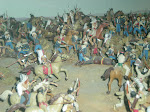
a close-up of the battle recreation
Custer's Cravat
Somebody loves the cravat
Lewis and Clark

A bear, a 400-year-old canoe and a ram head, with one thing in common
Justin and his gun
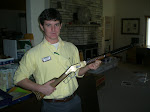
he is waaaay too excited about holding this gun


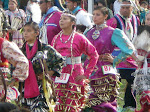
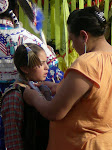
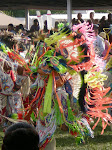



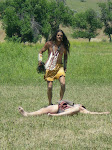

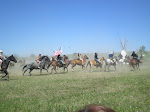
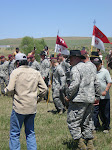

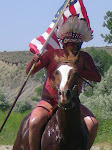

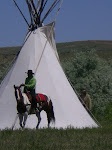

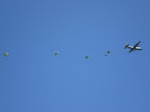
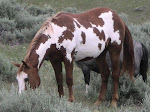

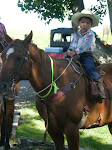


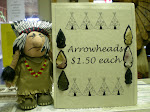
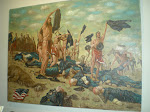
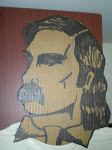









No comments:
Post a Comment